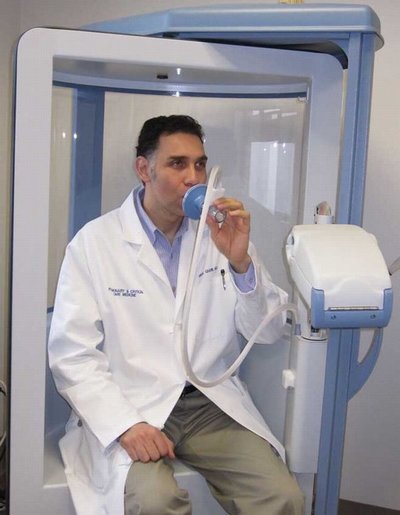January 7, 2010
Potential genetic links to lung disease risk found
The results of the National Institutes of Health-funded research were published online Dec. 13 in Nature Genetics.
Among the four lead authors of the multi-institutional study is Dr. Sina Gharib, University of Washington acting assistant professor of medicine, Division of Pulmonary and Critical Care Medicine, and a physician scientist at the UW Center for Lung Biology. Several other UW researchers were also part of the study team including Dr. Kristin Marciante, research scientist, Dr. Bruce Psaty, professor of medicine and epidemiology, Dr. Susan Heckbert, professor of epidemiology, and co-senior author Dr. Thomas Lumley, associate professor of biostatistics. Dr. Stephanie London, an investigator at the National Institute of Environmental Health Sciences of the National Institutes of Health, was the corresponding author.
Researchers have known for some time that genetic factors contribute to reduced lung function and increase the odds for developing breathing disorders like chronic obstructive pulmonary disease. This study reports on several previously unsuspected regions in the genome that are associated with impaired lung function.
The data for the lung function genetics study came from the Cohorts for Heart and Aging Research in Genomic Epidemiology consortium. This consortium combines the results of genome-wide association studies from several large population studies, including the Atherosclerosis Risk in Communities, the Cardiovascular Health Study, the Framingham Heart Study, and the Rotterdam Study in the Netherlands. Genome-wide association studies examine hundreds of thousands of genetic variants in thousands of people to try to find variants associated with particular diseases or conditions.
All of the subjects had their lung function measured with a spirometer, which records the volume of air a person breathes in and out, and how fast the person can forcefully blow out the air. Calculations from the readings can show if a person has airflow obstruction. The test is commonly used for people who have asthma, emphysema, cystic fibrosis, or air-borne environmental exposures.
Researchers were able to identify genetic associations with lung function in several regions of the genome. Some of these genetic variations were found near a gene known to encode for the hedgehog interacting protein, which is already implicated in a signaling pathway crucial to branching of the lungs during embryonic development. Dysfunctions in this pathway before birth can lead to several lung malformations in newborns. The hedgehog pathway may also govern how the lining of the lung responds to smoke or lack of oxygen.
The researchers also found genetic variants associated with lung function in an area that encodes for a protein abundant in healthy lungs and necessary to ward off pulmonary fibrosis. This protein is also associated with signaling pathways involved in defending against infection, inflammation, and tissue remodeling–mechanisms that may also contribute to the decline of lung function with age.
Several other locations in the human genome were identified that were highly associated with lung function. These regions span genes with plausible biological functions. The investigators suggest that these genomic regions should be further studied to determine how they influence lung function. In a companion paper in Nature Genetics, many of these findings were independently confirmed through genome-wide association studies from another large consortium based in the United Kingdom.
“Understanding the genetic determinants of pulmonary function,” the researchers conclude, “is paramount in identifying the biological mechanisms that lead to its decline.” Their hope is that such work will lead to ways to lessen the number of early deaths associated with reduced lung function.
###



